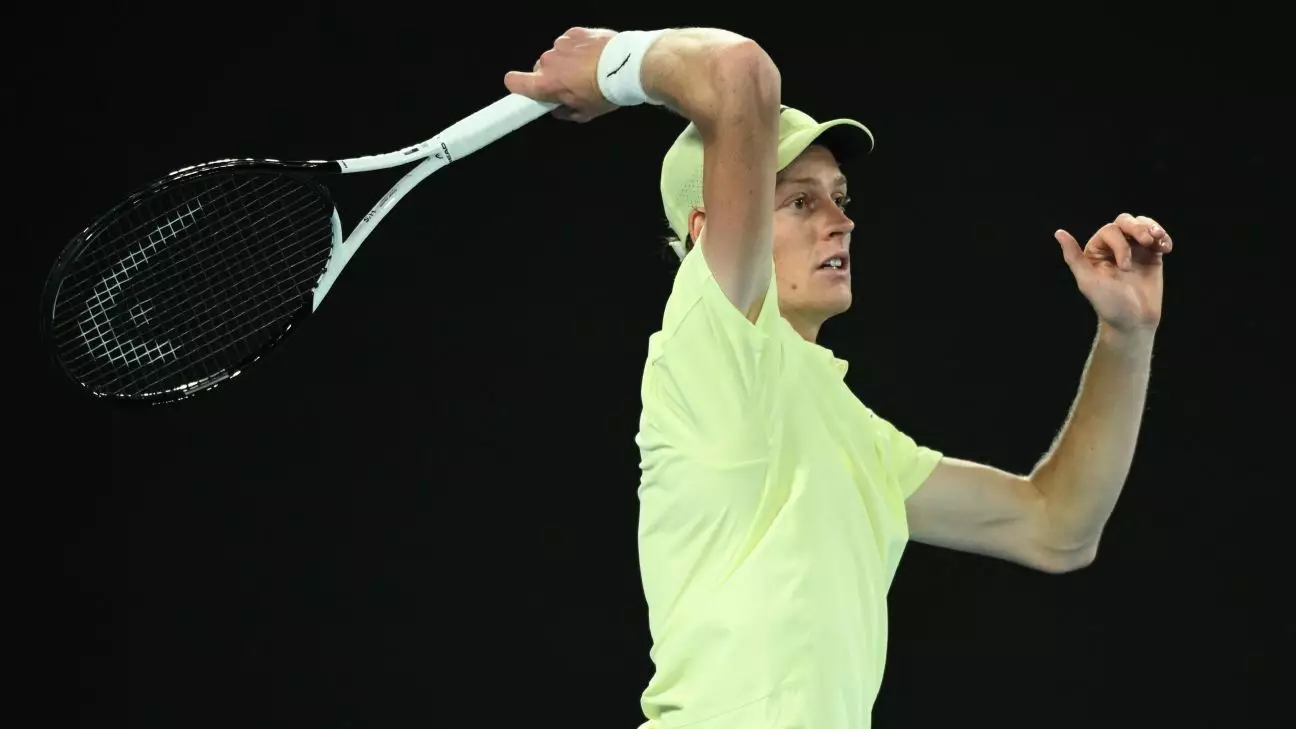The world of tennis has recently been rocked by high-profile doping cases, leaving players and enthusiasts alike questioning the integrity of the sport. At the center of this storm is Jannik Sinner, a young talent whose three-month suspension has sparked widespread debate. Doping remains one of the sport’s most sensitive issues, and the response from players, governing bodies, and the wider community highlights the significant challenges that lie ahead. Sinner’s case has pushed many athletes to seek guidance on how to navigate the treacherous waters of anti-doping regulations, indicating a critical need for an overhaul in communication and education surrounding these issues.
Sinner’s suspension occurred after the World Anti-Doping Agency (WADA) confirmed that a banned anabolic substance, clostebol, had entered his system through contamination during physiotherapy sessions. The fact that a promising athlete’s career could hang in the balance due to something as innocuous as a massage raises pressing questions. How can players ensure that they are not unwittingly compromised? The increase in queries directed to the International Tennis Integrity Agency (ITIA) demonstrates a collective apprehension among players regarding their health and reputation. The ITIA has pledged to bolster its support to ensure athletes feel secure in discussing their concerns, emphasizing that the goal is to protect the sport rather than ensnare its participants.
The Ripple Effect of Doping Allegations
Caught in the fallout of these recent events, other players have expressed dissatisfaction with the way the doping cases have been handled. Notable figures like Novak Djokovic and Serena Williams have been vocal about their concerns over perceived inconsistencies in how different cases are treated. While Sinner has continued to excel on the court, winning prestigious titles like the US Open and the Australian Open, the shadow of suspicion remains. The comparison to past cases, particularly for players of color and those with less fame, raises critical questions about the fairness of current doping policies.
As Serena Williams suggested, the consequences of a positive test can feel disproportionately harsh. This disparity in treatment based on individual profiles calls for an urgent reevaluation of policies and the approach taken by anti-doping agencies. Athletes deserve to know that their testimonies will be treated fairly, irrespective of their status or accolades. The inconsistency in the enforcement of doping regulations could demoralize players, who may feel that their hard work can be undermined by a flawed system.
The Role of Education and Support
With the spotlight on doping issues intensifying, the need for comprehensive education around potential pitfalls is more apparent than ever. The ITIA’s commitment to providing resources for players to check supplements and medications is a step in the right direction. However, mere availability of resources will not suffice without proactive outreach and engagement with the players themselves. Coaches and medical staff must also be educated on the nuances of doping regulations and potential sources of contamination.
The gravity of this situation has not escaped the attention of veterans like Rafael Nadal, who urged for Sinner to now focus on his game rather than the controversy. While Nadal appears confident in Sinner’s integrity, the psychological toll of such allegations cannot be ignored. Athletes are not merely contenders for titles; they are individuals facing immense pressure, and maintaining mental well-being in the face of adversity is paramount. Sports organizations must provide mental health resources alongside educational initiatives to ensure players’ overall well-being is prioritized.
Paving the Way Forward
As Jannik Sinner approaches his anticipated return to competitive play, the tennis world watches with bated breath. The communal reflection that has surfaced amidst these controversies could be the catalyst for meaningful change in anti-doping practices. Players deserve a system that not only upholds fairness but also prioritizes their empowerment through education and support. The rise in player inquiries presents a unique opportunity for the tennis community to work collectively to restore trust and enhance the framework governing the sport.
In a sport that thrives on competition, conversations about doping should not overshadow talent and hard work. Instead, they should serve as a reminder of the continuous effort needed to maintain integrity and a level playing field. As we move forward, it is incumbent upon all stakeholders—players, governing bodies, coaches, and fans—to contribute positively to a culture of transparency and respect within the sport of tennis. The journey ahead may be fraught with challenges, but it is one that can ultimately redefine the relationship between athletes and the anti-doping system for the better.

